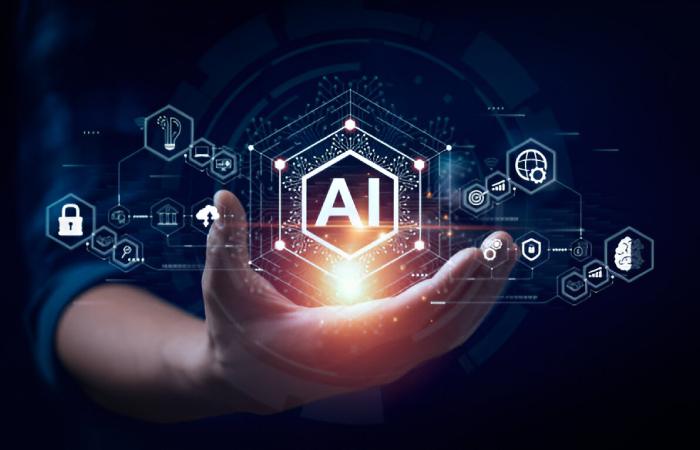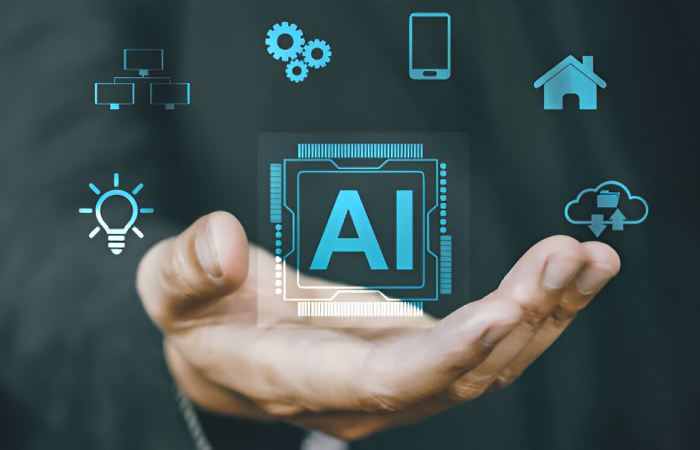Artificial intelligence has long since left the realm of science fiction and entered our lives. Although it is still in its early stages, it is poised to play a fundamental role in a revolt comparable to that generated by the internet. Its applications in sectors as diverse as healthcare, finance, transportation, and education have prompted the European Union to develop its legislation on robotics.
Why is Artificial Intelligence Important?
Some innovative technologies have been around for more than 50 years. However, increased processing power, the availability of vast amounts of data, and new algorithms have contributed to advances in artificial intelligence in recent years. Artificial intelligence plays a important role in the digital alteration of society and has become an EU priority. Future demands in this area are expected to generate significant changes, but AI is already present in our lives.
Types of Artificial Intelligence

Computer scientists Stuart Russell and Peter Norvig distinguish several Types, Welfares of artificial intelligence:
Systems that think like humans:
Automate actions such as decision-making, problem-solving, and learning. An example is artificial neural networks.
Systems that act like humans:
Computers that perform tasks similar to those of humans. This includes robots.
Systems that reason:
Attempt to imitate the rational and logical thinking of humans. Types, Welfares explore how to make machines perceive, reason, and act accordingly. Expert systems belong to this group.
Systems that act rationally:
Ideally, these systems attempt to imitate human behavior, such as intelligent agents acting rationally.
The Benefits and Challenges of Artificial Intelligence
Numerous success stories confirm the value of AI. Organisations that incorporate machine. learning and cognitive interactions into traditional applications and business processes are improving user experience and productivity. However, the foundation is not solid enough. Few companies have adopted AI in a balanced way for various reasons. For example, AI projects are often computationally intensive, unless they use cloud computing.
Practical Application of Artificial Intelligence
AI is used in mobile facial recognition systems, virtual voice assistants like applications Siri, Amazon’s Alexa, and Microsoft’s Cortana, and is combined into our everyday strategies through bots (short for robots) or mobile apps like Lyle (link, opens in new window), a personal digital shopping advisor; Talk (link, opens in new window), designed to help us learn a language; Ems (link, opens in new window), designed to make the difficult task of finding a new apartment a little more bearable; or Giant (link, opens in new window), Facebook’s virtual assistant that dispenses medical “diagnoses. The goal of all these apps is to make people’s lives easier.
Main Application of Artificial Intelligence
This rapid intrusion of artificial intelligence and robotics into our society has led international organisations to consider the need to develop regulations governing their use and applications to avoid potential problems in the future.
Robots must have an emergency stop switch to avoid any dangerous situations. They may not harm humanoid creatures. Robotics is specifically designed to assist and protect people. Emotional relationships cannot be formed.
Insurance for large machines will be mandatory. In the event of material damage, the owners will bear the costs. Their rights and obligations will be legally defined.
Machines will be subject to social security taxes. Their entry into the labour market will affect the workforce of many companies. Furthermore, robots will have to pay taxes to subsidise unemployment benefits.
Artificial Intelligence of Terminology
Artificial intelligence has develop a catch-all term for requests that perform complex tasks that previously required human interaction, such as communicating with online customers or playing chess. Furthermore, “time” is often used interchangeably by its subfields, such as machine knowledge and deep learning. However, there are some changes. For example, machine learning focuses on making systems that learn or recover their performance based on the data they consume. Furthermore, it’s significant to note that while all mechanism learning is AI, not all AI is mechanism knowledge.
How AI can Help Organizations

The important principle of AI is to replicate and surpass human perceptions and reactions to the world. It is quickly becoming a pillar of innovation. AI, based on various forms of machine learning that recognise patterns in data to make predictions, can bring value to your business through:
- Provide a complete understanding of the wealth of available data.
- Rely on predictions to automate overly complex or routine errands.
5 Common Legends About Enterprise of Artificial Intelligence
While many businesses have successfully implemented AI technology, there is also a lot of misinformation about it, its capabilities, and its potential. Here, we debunk five mutual myths around AI:
Myth 1: Initiative AI requires a build-your-own approach.
Fact: Most companies implement AI by combining in-house and off-the-shelf solutions. Developing AI in-house allows companies to tailor it to their specific business needs. Additionally, off-the-shelf AI solutions allow for streamlining implementation with a pre-built solution that addresses the most common business challenges.
Myth 2: AI immediately delivers magical results.
Reality: Successful AI implementation requires time and a clear understanding of your goal. A strategic framework and an iterative approach are necessary to avoid creating a random set of disparate AI answers.
Myth 3: People don’t need to run initiative AI.
Fact: In enterprise AI, robots don’t do everything. The value of AI lies in complementing human capabilities and freeing workers to perform more strategic tasks. Furthermore, AI depends on humans providing the correct data and acting appropriately.
Myth 4: The more data, the better.
Reality: Enterprise AI requires intelligent data. This data must also be high-quality, current, relevant, and complete so that AI can extract the most valuable business insights from it.
Myth 5: Enterprise AI only needs data and replicas to be successful.
Reality: Data, procedures, and models are just a starting point, but an AI answer must be scalable to meet changing business needs. Furthermore, most current enterprise AI solutions are developed manually by data scientists. These answers require extensive manual configuration and maintenance and are not scalable. Furthermore, successful AI projects require AI solutions that adapt to new requirements as AI evolves.
Creating the Right Culture of Artificial Intelligence
To take full advantage of AI and avoid the obstacles that hinder successful implementation, creating a team culture that fully ropes the AI ecosystem is necessary. Furthermore, in an environment like this:
- Business analysts work with data scientists to define glitches and goals
- Data causes manage the data and the underlying data podium to make it fully operational for analytics
- Data scientists prepare, explore, visualise, and model data on a data science podium
- IT architects manage the underlying infrastructure wanted to support data science in a composed way, whether on-premises or in the mist.
- Application designers implement models in applications to design data-driven products.
Conclusion
Artificial intelligence (AI) imitates human intelligence processes by machines, especially computer systems. These processes include learning (acquiring info and rules for using data), reasoning (using rules to arrive at approximate or definitive conclusions), and self-correction. AI is also used in expert systems, speech recognition, and computer vision.

